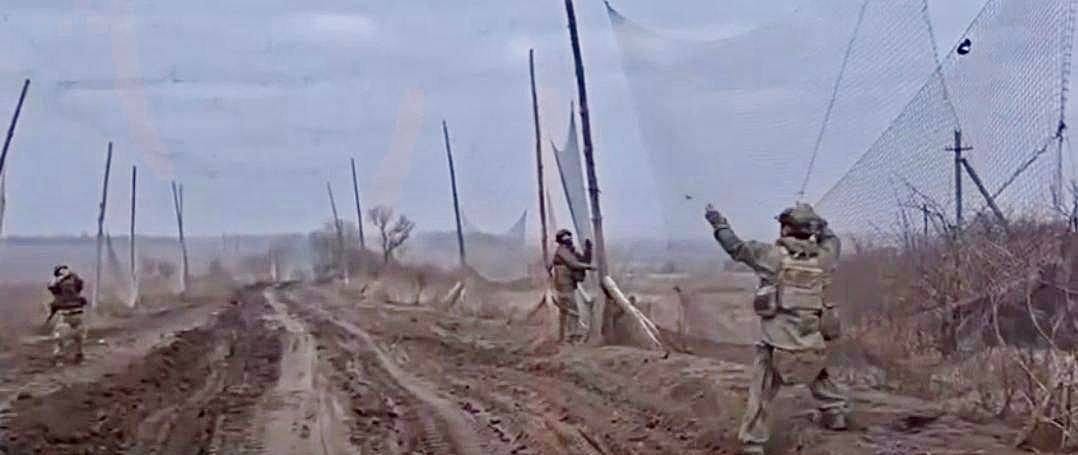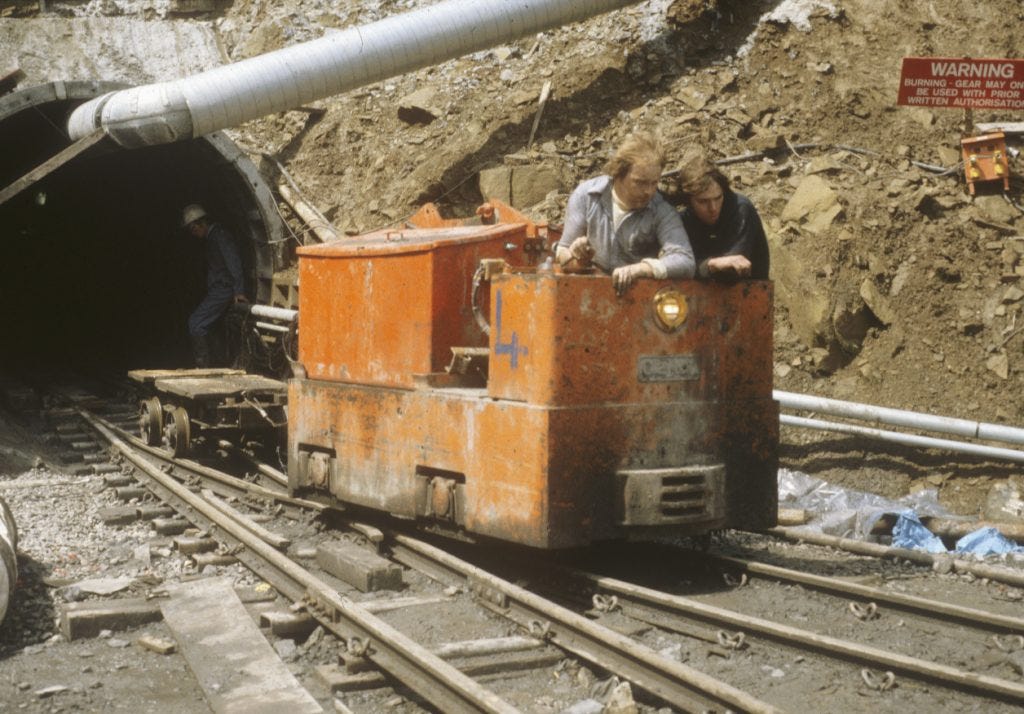Hardened Logistics: Building Fortified Supply Corridors
A recent video shows Russian soldiers installing anti-drone netting along a supply route, the latest effort to create hardened logistical corridors in Ukraine:
The timing feels uncanny: I’ve had my head buried in the War of the Spanish Succession, which saw a lot of this exact sort of thing. In 1711, for instance, during the siege of Bouchain, Marlborough constructed a passage back to his supply base at Marchiennes, fortified with ditches, earthworks, and palisades.

The following year, when the Allies had pushed deeper into French territory, they rerouted their logistics through Denain, to serve as a forward depot for operations on the far side of the Scheldt.

Logistics has always been the biggest vulnerability of dug-in troops, whether they are manning 18th-century siege lines or fighting on a continuous front in the 21st century. UAVs and artillery play the same role that enemy cavalry once did, able to slip through the front and harass rear areas.
Nothing so robust as Marlborough’s fortified corridors exists as of yet to defend against these modern threats, however. Protective measures have so far been provisional: overlapping EW and AD coverage along the route, hardened vehicles, nets at regular intervals above the road, and now tunnels of netting—covering just 2 km of road in one of the most active parts of the front.

While these kinds of measures are better than nothing, they highlights a major gap in every military’s force structure.
Movement Under Fire
The problem of supplying troops in fixed positions is fundamentally similar to ensuring the survivability of a mobile force in the opening phase of a conflict. Wherever there is persistent surveillance and enemy fires within range, anything that moves is vulnerable. I have argued that whenever ground troops are not advancing, they will have to get under cover—which in most cases means digging. If properly equipped, however, maneuver units can begin hardening their supply lines as they advance:
This requires considerable fire support and engineering assets at every echelon. Each serial would have to contain its own air defense and counterbattery capabilities, or ensure that it is moving within the coverage of others. One advantage is that follow-on units can expand and improve the positions dug by preceding units, creating a fortified corridor through which supplies can be pushed forward. If well executed, this process of continuous entrenchment can avert a desperate scramble to protect forces later on.
Hardened corridors need not be limited to burrowed-out stopover points connected by flimsy stopgaps. A number of improvements can be made continuously over time. Sturdier structures can be emplaced over roadways, something like the mesh tunnels that pass through golf courses.
These can be augmented by creating sunken roads, both to reduce the amount of material needed overhead and to provide better protection against artillery.
Conceivably, narrow-gauge tracks could even be installed wherever it is possible to provide adequate top-cover—these require far less clearance than trucks and can be used more efficiently.
The Limiting Factor
Such measures would greatly ease logistics in a high-threat environment such as Ukraine, but would also require large up-front investments. No military on earth has sufficient excavators or engineering equipment for such a task—along with shortages in low-end ammunition production and high-end PGMs, the current war has highlighted gaps in the vast middle tier of technology. And, faced with more urgent demands elsewhere, both sides in Ukraine have been slow to use what they do have to entrench to the full extent necessary.
But the pressures of the modern battlefield are inexorable and reward those who adapt. Hardened logistical corridors stretching many kilometers behind the front lines may seem far-fetched at the present moment, but may also yield compounding benefits in terms of men and material saved.
Thank you for reading the Bazaar of War. Most articles are free for all to read, but a subscription option is available to all who wish to support. Subscribers receive a pdf of the critical edition of the classic The Art of War in Italy: 1494-1529, and will have exclusive access to occasional pieces.
You can also support by purchasing Saladin the Strategist in paperback or Kindle format.





Very interesting. I’m impressed how you (accurately) generalise the problem as relevant to many different historical periods. Drones as an analogy to skirmishers and light cavalry is intriguing.
The Cold War Red Army had the world’s largest and most varied collection of military engineering vehicles and earth movers but I haven’t seen any reports as to how much of this inventory has survived.